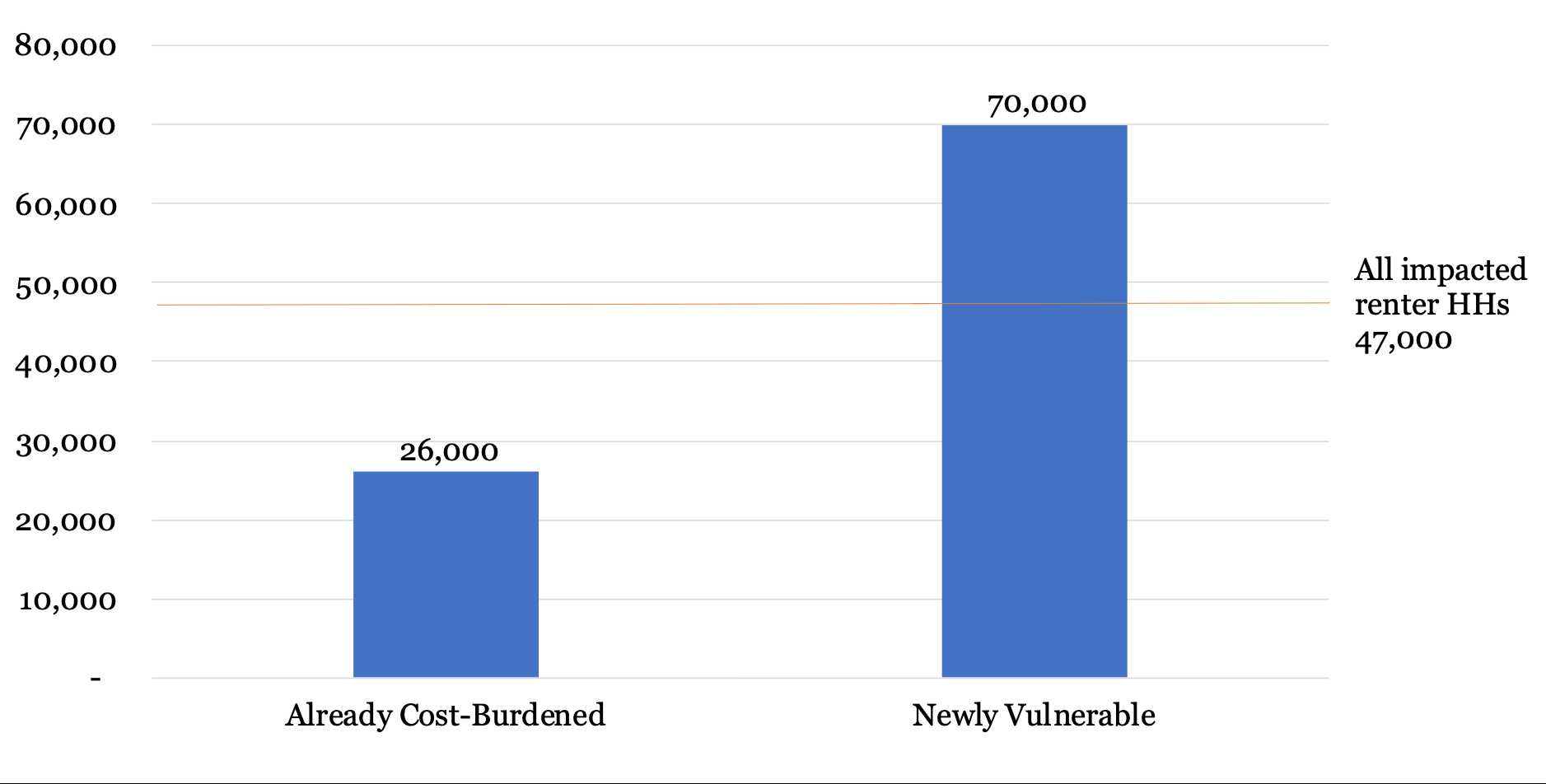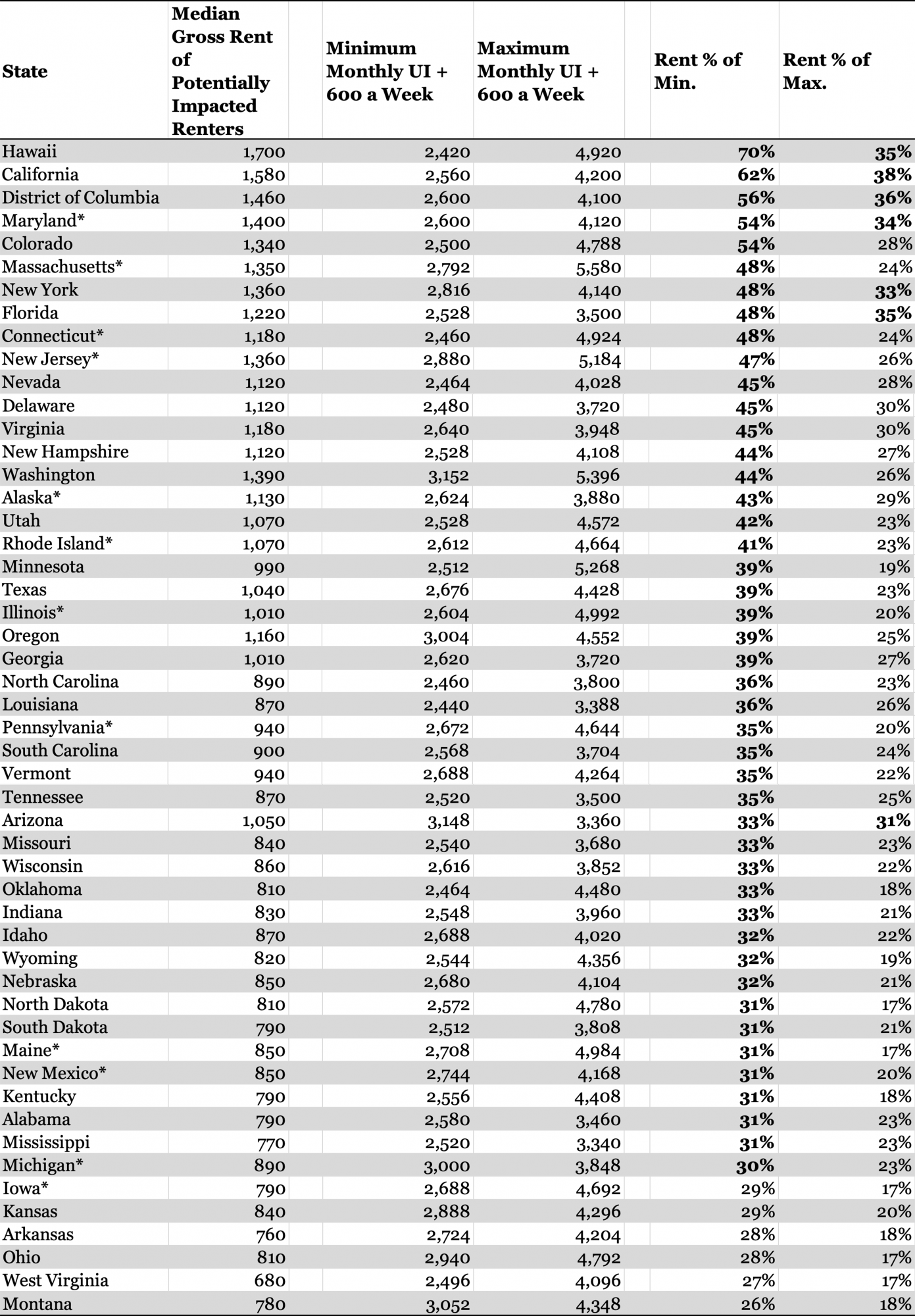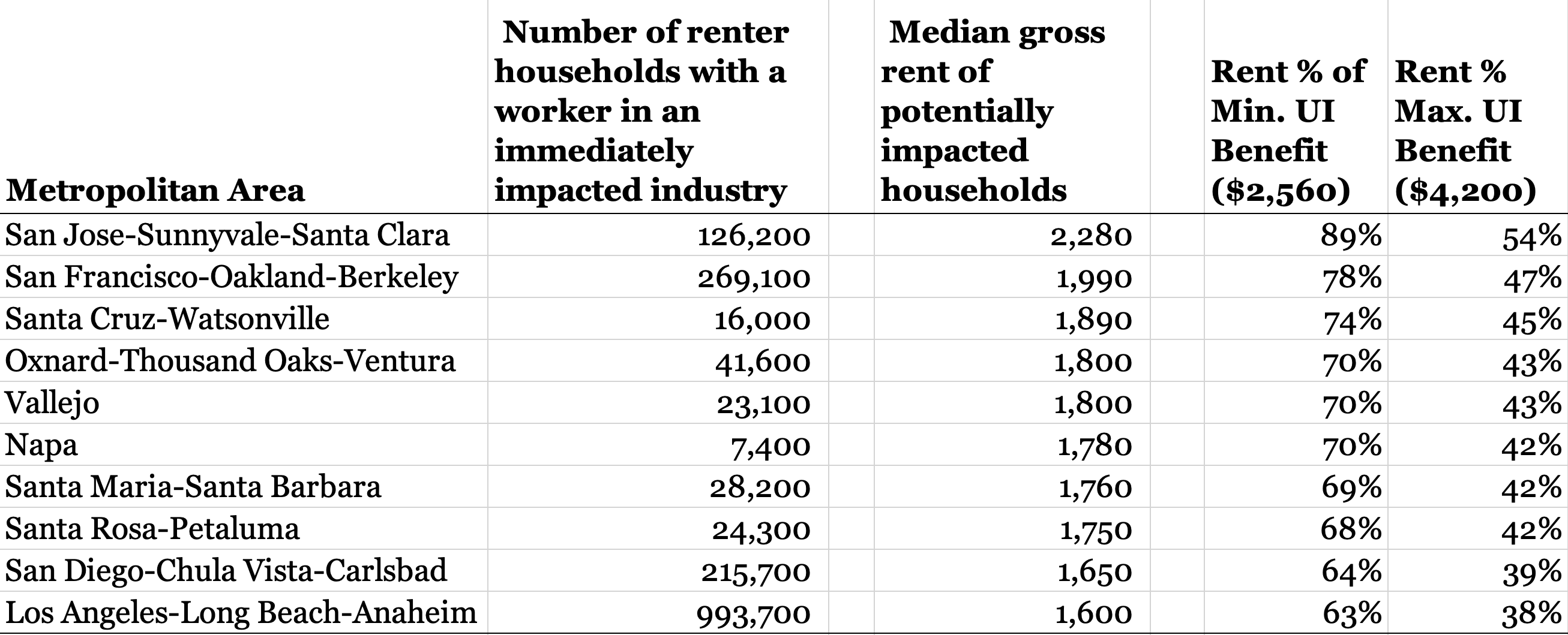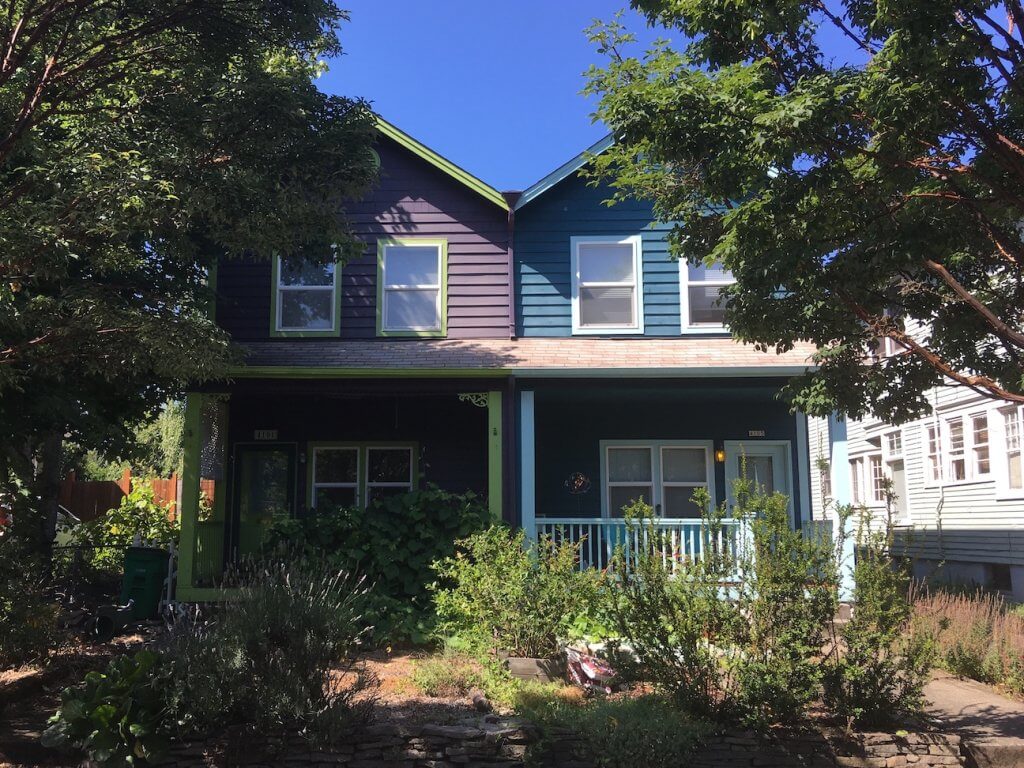Estimating COVID-19’s Near-Term Impact on Renters
Published On April 24, 2020
As some states edge into week six of social distancing stay-at-home orders, and Unemployment Insurance (UI) claims average 5.5 million a week, another rent day approaches. The benefits included in the federal CARES Act were an important step to respond to the near-term economic impacts of efforts to slow the spread of COVID-19, but this aid is only just beginning to reach households that may have lost jobs and income more than a month ago. A significant number of immediately-impacted households are renters. The CARES Act included an eviction moratorium for the one-quarter of renter households in the U.S. in federally-financed properties, and some emergency funding for critical homeless assistance grants and housing subsidy programs. But federal relief efforts have yet to fully address mounting rent shortfalls that will eventually come due.
Below, we estimate the number of renter households likely facing income losses due to economic impacts of efforts to slow the spread of COVID-19, including those who were already struggling to make ends meet and those who may be newly struggling after losing a job. We also provide state and metro area estimates (see Appendix) to offer insights into who and where may be hit hardest by the initial economic impacts of the pandemic.
There are a number of different ways to estimate the likely near-term effects of the unfolding crisis on renter households. Here, we use 2018 American Community Survey microdata to identify renter households with at least one worker in an industry likely to be affected by the immediate economic impacts of social distancing and stay-at-home orders, based on guidance in a selection of state and regional stay-at-home orders, reporting, and early estimates of job losses by sector.(1)
As the COVID-19 crisis and its economic consequences unfold, we will continue to refine our estimates of their impact. But these initial estimates provide an indication of the magnitude of first wave impacts and the extent to which rent shortfalls—and need for additional aid for renters—may vary across and within states. We find:
Nearly 16.5 million renter households have at least one worker in an industry likely to be immediately affected by efforts to flatten the curve in the COVID-19 pandemic. That means nearly 50 million people live in a renter household likely experiencing immediate job or income losses. Children (27%) and young adults (16%) make up a disproportionate share of this vulnerable population, and nearly half (46%) are prime-age workers. These renters are also more likely to be people of color: while Latinx and Black residents make up 18% and 12% of the U.S. population, they account for 28% and 18% of the impacted renter population, respectively.
No state is immune to the COVID-related economic impacts that can put renter households at risk of housing instability. Renters in Blue and Red states, alike, are confronting likely income and job losses due to the economic fallout of social distancing guidance and stay-at-home orders. Thirty percent (30%) of the nation’s likely-impacted renter households are in California (2.3 million), Texas (1.4 million), New York (1.1 million), and Florida (994,200). But every state has its share of renter households with workers in immediately-impacted industries. In Nevada, where workers in renter households are disproportionately likely to have jobs in food service, entertainment, and tourism, nearly half of renter households (48%) are likely facing job or income losses (see Appendix for detailed state data). In Indiana and Michigan, workers in renter households not only skew towards those service industries but also toward non-essential manufacturing, making more than 40% of their renter households vulnerable to COVID-related economic impacts (44% and 42%, respectively).
Among likely-impacted renter households, more than 7.1 million were already experiencing housing cost burdens and are likely to be especially vulnerable. Roughly 43 percent (or 7.1 million) of likely-impacted renter households were already struggling with rental cost burdens before the COVID-19 crisis took hold. That share stretches even higher in the District of Columbia (54%), Florida (51%), California (50%), and other high-cost, hard-hit areas like Connecticut (48%), New Jersey (47%), and New York (46%).
While households that did not have cost burdens before the crisis may now be facing housing insecurity or trouble paying rent due to COVID-related income impacts, income losses are likely to make the near-term situation of previously cost-burdened renters particularly acute. Typical rents are roughly the same between the two groups, but typical incomes are not (Figure 1), suggesting that already-burdened renters have little (if any cushion) to weather the shutdown (see Appendix for detailed data). Put differently, the current crisis only exacerbates the vulnerability these cost-burdened households were already facing, putting them at greater risk of housing instability.
Figure 1. Median Household Income for Renter Households with a Worker in an Immediately-Impacted Industry

Relief measures included in the federal CARES Act will provide critical resources over the next few months, but will not be sufficient to address the rental assistance needed by many of the hardest hit households. Together, immediately-impacted renter households pay $19.5 billion in rent each month. The one-time stimulus payment rolling out this month may help some households backfill last month’s rent shortfall or pay something toward this month’s bill—if it isn’t exhausted on food or medical bills or other needs first. But as unpaid rents stack up, these immediately-impacted renters—and the growing number of renters who will be affected by income losses as the effects of the economic slowdown spread—will need additional assistance to ensure they don’t lose their housing when the payments clock starts ticking again.
The expansion of Unemployment Insurance will no doubt help many of these households, if they are able to claim it. However, it has been slow to deploy as states grapple with the magnitude of claims and often outdated payment systems. And, while the CARES Act expands benefits to previously ineligible groups like gig workers, these workers may see even longer delays—and greater challenges—in accessing assistance, even as their bills continue to pile up.
What is more, those expanded benefits will stretch further in some places than others. Many factors will affect the amount a household will receive from UI (e.g., number of eligible workers, previous earnings, the benefit levels and eligibility criteria set by the state they live in). But even at the highest benefit levels, workers in higher cost areas may see those resources quickly depleted by rent burdens. One indication of the variability of expanded UI benefits and rent needs across the country is to consider the typical rents of immediately-impacted renter households and how they compare to the range of the augmented minimum(2) and maximum UI benefits a worker could receive (Table 1).
Table 1. Comparison of Typical Rents for Likely-Impacted Renter Households with Minimum and Maximum Unemployment Benefits, by State

 *Indicates that minimum benefits can vary. The lowest minimum value is used in these estimates (for details see: https://oui.doleta.gov/unemploy/content/sigpros/2020-2029/January2020.pdf). Bold indicates where typical rents would take up more than 30% of UI benefits, assuming one worker in the household receives assistance. Note that rent estimates come from the 2018 American Community Survey. Figures have been rounded, and are likely conservative estimates of rents in today’s market, particularly in higher-cost states.
*Indicates that minimum benefits can vary. The lowest minimum value is used in these estimates (for details see: https://oui.doleta.gov/unemploy/content/sigpros/2020-2029/January2020.pdf). Bold indicates where typical rents would take up more than 30% of UI benefits, assuming one worker in the household receives assistance. Note that rent estimates come from the 2018 American Community Survey. Figures have been rounded, and are likely conservative estimates of rents in today’s market, particularly in higher-cost states.
A household receiving the minimum benefit would face a housing cost burden in all but six states. In higher-cost places like Hawaii, California, and D.C., a renter household receiving the minimum augmented benefit would have little left over for needs other than housing. And in those states, even if that worker received the maximum benefit, rental costs would take up more than a third of their monthly UI payment.
Renters in high-cost metro areas are especially likely to struggle with rent shortfalls. The variations in renter households impacted and likely benefit coverage suggested by state estimates become more apparent when looking at regional differences within states. Take California as an example. Renters in the U.S. are already more likely to work in immediately-impacted industries than the population as a whole (36% of workers in renter households versus 33% of all workers). In California, workers in renter households also tilt more heavily toward jobs in service industries such as the accommodation and food service industries, which have sustained the steepest job losses due to COVID-19, as well as the entertainment industry. That is especially true in the Los Angeles metro area, which is home to almost 1 million of the state’s renter households likely to be immediately-impacted by COVID-19-related income or jobs losses (Table 2).
Table 2. Likely-Impacted Renter Households and Their Typical Rents Compared to UI Benefits, in Select California Metro Areas
*Estimates derived from the 2018 American Community Survey microdata have been rounded.
Typical rents of likely-impacted households vary widely across the state’s 26 metropolitan areas, as does how far augmented UI benefits would stretch if these households had one worker receiving benefits. For the state’s most populous—and most expensive—markets, even the maximum benefits would leave impacted renters cost-burdened, and severely so in Silicon Valley.
Again, the landscape is likely to shift as the COVID-19 crisis continues and may require longer and/or additional waves of shelter-in-place measures. But these initial estimates of renter households likely to have been immediately-impacted by job or income losses over the past month underscore the need for targeted rental assistance—especially in higher-cost areas and as arrears mount for households waiting to receive UI (or those unable to claim it). Households that were already struggling with rent burdens are likely to be particularly vulnerable to housing instability, and may become more so as benefits lag and much of the country continues to stay home. Federal assistance that can help keep these renters housed is critical, both for weathering the near-term crisis and to speed the path to an economic recovery that is broadly shared.
As the Terner Center continues to track the compounding effects of this crisis, we will also be releasing recommendations for federal and state policy action that can address the housing needs of households impacted by the pandemic and its negative economic consequences.
Visit https://ternercenter.berkeley.edu/covid-19-and-housing to access all of Terner Center’s COVID-19-related research and policy analysis, and sign up for our newsletter to be alerted as new resources become available.
Appendix: State and Metro Area Data and Impacted Industry Codes
(1) For the purposes of this analysis, we consider immediately-impacted industries to include Food Service; Entertainment; Mining and Extraction; Non-Essential Manufacturing; Non-Essential Retail; Non-Essential Travel, Transportation, and Tourism; Other Services. See Appendix for a full list of NAICS codes included.
(2) Minimum Unemployment Insurance benefits levels in Tables 1 and 2 were revised May 6, 2020.





